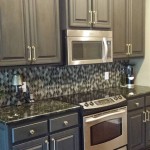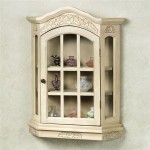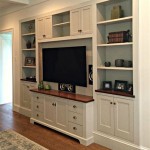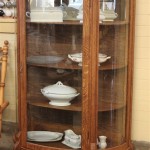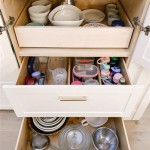Painting Cabinets Without Sanding: A Guide to the Essential Aspects
Repainting kitchen cabinets can revitalize your kitchen's appearance without a costly remodel. However, sanding is often seen as a necessary but time-consuming step in the process. Fortunately, there are effective techniques to paint cabinets without sanding, making the project more accessible and less daunting.
Surface Preparation: The Key to Adhesion
The key to a successful paint job without sanding lies in thorough surface preparation. Begin by cleaning the cabinets with a degreaser to remove dirt, grease, and grime. This ensures optimal paint adhesion. Next, use a TSP solution to remove any remaining oils or contaminants.
Choosing the Right Tools and Materials
The type of paint you choose is crucial. Oil-based paints provide excellent adhesion and durability but require longer drying times and produce strong fumes. Water-based paints, on the other hand, dry faster, produce fewer fumes, and are more environmentally friendly. For best results, opt for a paint specifically designed for cabinets.
A high-quality brush or roller is essential for a smooth, even finish. Use a medium-firm brush for detail work and a microfiber roller for larger surfaces. Additionally, invest in a deglossing agent to ensure the paint adheres well to the glossy finish of the cabinets.
Applying the Deglosser
Before applying the paint, apply a deglosser to the cabinets using a paintbrush or roller. This will create a slight etching on the surface, providing a rougher texture for the paint to grip.
Painting with Precision
Apply thin, even coats of paint, allowing each coat to dry completely before applying the next. Use a light touch with the brush or roller to avoid drips. For a smoother finish, lightly sand between coats using fine-grit sandpaper or a sanding sponge.
Special Considerations: Laminate and MDF Cabinets
Laminate cabinets require a slightly different approach. Sanding is not recommended, so use a deglosser specifically designed for laminate surfaces. Apply a bonding primer before painting to enhance adhesion.
MDF cabinets are more porous and absorb moisture easily. Prime MDF cabinets thoroughly to prevent warping. Use a water-resistant primer and paint to protect the cabinets from moisture damage.
Post-Painting Care
Allow the painted cabinets to cure for several days before using them. Avoid placing heavy objects on them during this time. To maintain the finish, clean the cabinets regularly with a mild cleaner and avoid using abrasive materials.
Conclusion
Painting cabinets without sanding is a feasible option that can save time and effort. By meticulously following the outlined steps and using the appropriate tools and materials, you can achieve a professional-looking finish that will revamp your kitchen's aesthetics.

How To Paint Laminate Cabinets Without Sanding The Palette Muse

How To Paint Cabinets Without Sanding

The Best Way To Paint Kitchen Cabinets No Sanding Palette Muse

Diy How To Paint Cabinets Without Sanding Vlog

How To Paint Cabinets Without Removing Doors House Mix

How To Paint Cabinets Without Sanding A Fresh Squeezed Life

How To Paint Cabinets With No Sanding Or Priming

Prep And Paint Cabinets Without Sanding
How To Paint Kitchen Cabinets Without Sanding

Can You Paint Cabinets Without Sanding Trusted Coatings
Related Posts

